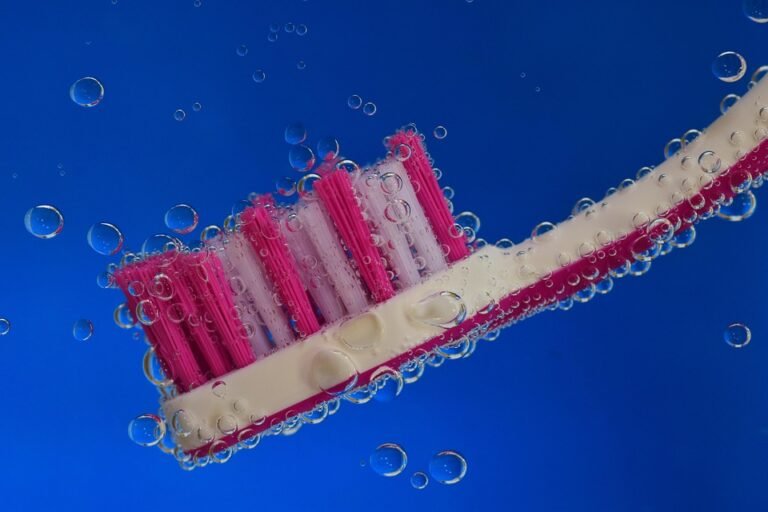What role does technology play in the future of dentistry and which skills are required?
Okay, so I’m a dental student, and I’m starting to think more long-term about my career. It’s clear that technology is changing everything, and dentistry is no exception. I’m just trying to get a handle on how much it’s going to change and, more importantly, what I should be focusing on learning now to be successful in, say, 10-15 years.
Specifically, I’m wondering about things like:
- Digital Dentistry: How prevalent will things like CAD/CAM, 3D printing, and digital impressions actually be? Will traditional methods become obsolete?
- AI and Machine Learning: Will AI be used for diagnostics? Will it impact treatment planning? What are the ethical considerations?
- Teledentistry: How much will remote consultations and monitoring impact the field, especially in rural or underserved areas?
- Surgical Advancements: What new surgical technologies are on the horizon (e.g., robotics, laser dentistry advancements) and how will they change the way we perform procedures?
- Data Analysis: How important will understanding and using patient data become for improving outcomes and practice management?
And then, on the skills side, beyond just knowing how to use these technologies, what broader skills will be crucial? I’m thinking about things like:
- Technical Proficiency: Obvious, but how deep of a technical understanding do I need? Do I need to learn programming?
- Adaptability and Lifelong Learning: How important will it be to constantly adapt to new technologies and learn new techniques?
- Critical Thinking and Problem Solving: Will technology replace our clinical judgment, or will we still need to critically analyze data and make informed decisions?
- Communication and Patient Education: Will we need to be even better at communicating complex information to patients about the technology being used and its benefits?
- Business Acumen: How will technology impact practice management, marketing, and overall business strategy?
Basically, I’m trying to figure out where to focus my energy and what skills to cultivate to be well-prepared for the future of dentistry. Any insights from experienced dentists or anyone with expertise in this area would be greatly appreciated!
Answer
Technology is poised to revolutionize virtually every aspect of dentistry, shaping a future characterized by enhanced precision, efficiency, patient comfort, and diagnostic capabilities. Its role spans diagnostics, treatment planning, surgical procedures, restorative dentistry, orthodontics, and patient communication.
Diagnostics:
- Cone-Beam Computed Tomography (CBCT): CBCT will continue to be an indispensable tool for three-dimensional imaging of the maxillofacial region. Future advancements will focus on reducing radiation exposure, improving image resolution, and developing sophisticated software for automated anatomical landmark identification and pathology detection. Machine learning algorithms will further refine diagnostic accuracy by analyzing vast datasets of CBCT scans to identify subtle anomalies indicative of various dental and skeletal conditions.
- Intraoral Scanners: Digital impressions obtained with intraoral scanners are replacing traditional impression materials at an accelerating pace. Future scanners will feature enhanced scanning speeds, improved color accuracy, and greater compatibility with various CAD/CAM systems. Artificial intelligence (AI) integration will enable real-time feedback during scanning, ensuring optimal data acquisition and minimizing errors. The ability to scan soft tissues with greater precision will aid in diagnosing gingival and mucosal abnormalities.
- Artificial Intelligence (AI) in Diagnostics: AI algorithms are being developed to automate the analysis of radiographs, CBCT scans, and intraoral images. These algorithms can detect caries, periodontal bone loss, periapical lesions, and even oral cancer with increasing accuracy. AI-powered diagnostic tools will assist dentists in making more informed decisions and identifying pathologies at earlier stages.
- Optical Coherence Tomography (OCT): OCT provides high-resolution, cross-sectional imaging of dental tissues, allowing for the non-invasive detection of early caries, microcracks, and other structural defects. Future advancements will focus on miniaturizing OCT devices and integrating them into handheld instruments for chairside use.
Treatment Planning:
- Digital Treatment Planning Software: Software platforms that integrate CBCT data, intraoral scans, and facial scans are becoming increasingly sophisticated. These platforms allow dentists to visualize treatment outcomes, plan surgical procedures with greater precision, and create custom-designed appliances such as surgical guides and orthodontic aligners. Future software will incorporate AI algorithms to optimize treatment plans based on biomechanical principles and patient-specific factors.
- 3D Printing: 3D printing is revolutionizing the fabrication of dental models, surgical guides, provisional restorations, and even final restorations. Future advancements will focus on developing new biocompatible materials with improved mechanical properties and aesthetic qualities. The integration of 3D printing with digital treatment planning software will enable dentists to create personalized solutions for each patient.
Surgical Procedures:
- Robotics in Dentistry: Robotic systems are emerging as a promising technology for performing complex surgical procedures with enhanced precision and control. Robotic-assisted implant placement, endodontic treatment, and maxillofacial surgery are becoming increasingly viable options. Future advancements will focus on developing smaller, more versatile robotic systems that can be easily integrated into the dental operatory.
- Piezoelectric Surgery: Piezoelectric devices use ultrasonic vibrations to selectively cut bone tissue while minimizing damage to surrounding soft tissues. This technology is particularly useful for delicate surgical procedures such as sinus lifts, ridge augmentation, and implant site preparation. Future advancements will focus on developing more powerful and versatile piezoelectric devices with improved ergonomics.
- Laser Dentistry: Lasers are being used for a wide range of dental procedures, including caries removal, soft tissue surgery, and periodontal therapy. Future advancements will focus on developing lasers with improved wavelength specificity, power control, and safety features. The integration of lasers with robotic systems will enable even more precise and minimally invasive surgical procedures.
Restorative Dentistry:
- CAD/CAM Technology: CAD/CAM systems enable dentists to design and fabricate dental restorations with exceptional precision and efficiency. Future advancements will focus on developing new materials with improved aesthetic qualities and mechanical properties, as well as streamlining the CAD/CAM workflow to reduce chairside time.
- Biomaterials: Research into new biomaterials is ongoing, with a focus on developing materials that are biocompatible, bioactive, and possess enhanced mechanical properties. Examples include self-healing composites, antibacterial dental cements, and regenerative materials that can stimulate the formation of new bone and dental tissues.
Orthodontics:
- Clear Aligner Therapy: Clear aligners are becoming an increasingly popular alternative to traditional braces. Future advancements will focus on developing aligners with improved shape retention, greater force delivery, and shorter treatment times. AI algorithms will be used to optimize aligner design and predict treatment outcomes with greater accuracy.
- 3D-Printed Braces: 3D printing is being used to create custom-designed braces that fit the patient’s teeth perfectly. These braces can be more comfortable, aesthetically pleasing, and efficient than traditional braces. Future advancements will focus on developing new materials for 3D-printed braces that are stronger, more durable, and more biocompatible.
Patient Communication and Education:
- Virtual Reality (VR) and Augmented Reality (AR): VR and AR technologies are being used to educate patients about dental procedures and improve communication between dentists and patients. VR simulations can allow patients to experience dental procedures in a safe and controlled environment, reducing anxiety and improving understanding. AR applications can overlay digital information onto the patient’s mouth, allowing dentists to explain treatment plans in a more visual and engaging way.
- Tele dentistry: Tele dentistry is expanding access to dental care, particularly in underserved areas. Future advancements will focus on developing more sophisticated remote monitoring devices and secure communication platforms to enable dentists to provide comprehensive care remotely.
Required Skills:
To thrive in the future of dentistry, dental professionals will need to cultivate a specific set of skills:
- Digital Literacy: A strong understanding of digital technologies, including CAD/CAM systems, intraoral scanners, CBCT imaging, and 3D printing, is essential. This includes the ability to operate the equipment, interpret digital data, and troubleshoot technical issues.
- Data Analysis: The ability to analyze large datasets of clinical information and imaging data will become increasingly important. Dentists will need to be able to interpret AI-generated reports and use data to make more informed treatment decisions.
- Critical Thinking and Problem-Solving: Technology is a tool, and dentists must retain the critical thinking skills to assess situations, understand limitations, and adapt treatment plans when necessary. They must be able to critically evaluate the output from technology and make sound clinical judgments.
- Adaptability and Lifelong Learning: The rapid pace of technological change requires dentists to be adaptable and committed to lifelong learning. They must be willing to embrace new technologies and continuously update their skills and knowledge.
- Communication and Interpersonal Skills: While technology will play a larger role in dentistry, the human element remains critical. Dentists must be able to communicate effectively with patients, explain treatment plans clearly, and build trust. Strong interpersonal skills are also essential for collaborating with other healthcare professionals and managing a dental team.
- Biomechanics and Materials Science: A solid understanding of the biomechanical principles of occlusion and the properties of dental materials is essential for designing and fabricating durable and functional restorations.
- Ethical Considerations: As AI and other advanced technologies become more prevalent, dentists must be aware of the ethical implications of their use. This includes issues such as data privacy, algorithmic bias, and the potential for misuse of technology.
In conclusion, technology will fundamentally transform dentistry, leading to more precise, efficient, and patient-centered care. Dental professionals who embrace these advancements and develop the necessary skills will be well-positioned to succeed in the future of dentistry.


